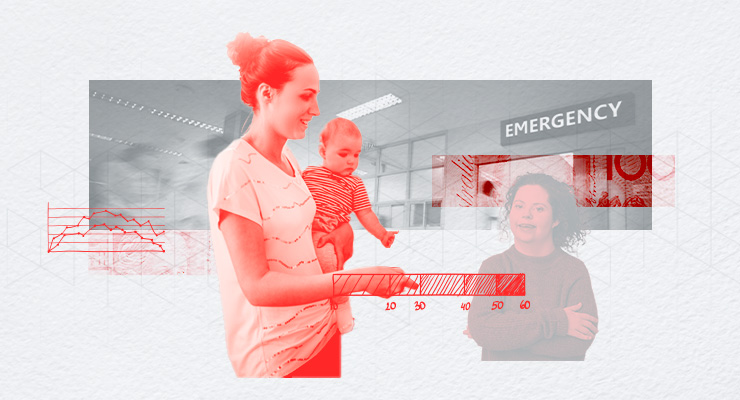
Healthcare has been in the spotlight in the wake of the pandemic, with growing concerns about the impact of long COVID and reinfections, huge wait times in emergency departments, a national mental health crisis, and ongoing GP shortages. But urgent care clinics and cancer centres are some of the only tangible outcomes in tonight’s federal budget — and while the government has acknowledged skyrocketing Medicare costs and pressure on the health system, it doesn’t seem to have a plan to address the problem.
Scant detail on strengthening Medicare
Medicare and private health rebates make up 36.4% of all estimated health expenses for this year. It’s a blow to the bottom line: expenses are projected to grow by 4.5% from now until 2026, though private health expenses will drop by 1.6% during this same period.
Whenever previously pressed on its action (or lack thereof) on Medicare, the government has pointed to its $750 million Strengthening Medicare Fund.
But the budget doesn’t contain many details on where this will go or how it will be spent — the Strengthening Medicare Taskforce will only hand down its report at the end of the year.
We do know that almost half of that cash — $300 million — will go to supporting general practices with grants of up to $50,000 to invest in digital capability, infection control, and to meet accreditation standards, with some going to Aboriginal Community Controlled Health Services.
But the other $450 million is anyone’s guess.
More funding — but no consultation — for urgent care clinics
Emergency departments are crying out for help while GPs are struggling with low staffing numbers and high demand. The government has repeatedly promised that urgent care clinics will help ease this burden, funding 50 or more existing GP clinics to stay open later and hire more staff with a greater breadth of skills. The idea is that people with infections, fractures or other urgent (but not critical) healthcare needs can go to the after-hour clinics to ease the burden on emergency departments.
The budget contains an extra $100 million to pilot urgent care clinics, bringing the total investment to $235 million.
But as Crikey previously reported, it’s not clear how effective these clinics will be — and there’s been limited consultation with healthcare practitioners. The government wants the clinics up and running by next year.
Scraping savings where it can
Medical benefits are the fourth-most expensive expense program in the 2022-23 financial year, costing $31.2 million; pharmaceutical benefits are close behind at $18 million.
The government has recouped some of its losses, announcing a $5.5 million saving from new and amended listings on the Medicare benefits schedule. It will also save cash from its Pharmaceutical Benefits Scheme pricing policies — the government pays a competitive rate on medicines, with how much it pays for a generic medicine decreasing every year after the first five years. Expenses are expected to decrease by 13% from this year to 2025-26. From next year, the maximum co-payment — what a person pays — for medicines listed on the Pharmaceutical Benefits Scheme will decrease from $42.50 to $30 per script.
There are some other savings: deferring the implementation of the plastic and reconstructive surgery Medicare component from the previous government will save $6.3 million, while deferring funding for storing assistance for IVF reproductive technology will save $2.4 million.
Look at the bright side
There are plenty of positives to take away: there’s $5.9 million over two years to expand pregnancy and post-natal care guidelines for expectant parents; $452 million for cancer centres in Brisbane and Adelaide; $9.5 million over four years for new Medicare Benefits Schedule tests and medicines; and $61.8 million over six years to fund local health investment projects in rural and regional locations.








Crikey is committed to hosting lively discussions. Help us keep the conversation useful, interesting and welcoming. We aim to publish comments quickly in the interest of promoting robust conversation, but we’re a small team and we deploy filters to protect against legal risk. Occasionally your comment may be held up while we review, but we’re working as fast as we can to keep the conversation rolling.
The Crikey comment section is members-only content. Please subscribe to leave a comment.
The Crikey comment section is members-only content. Please login to leave a comment.